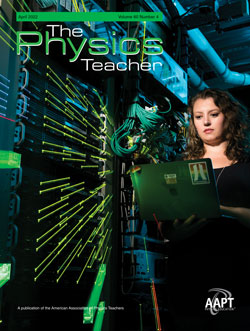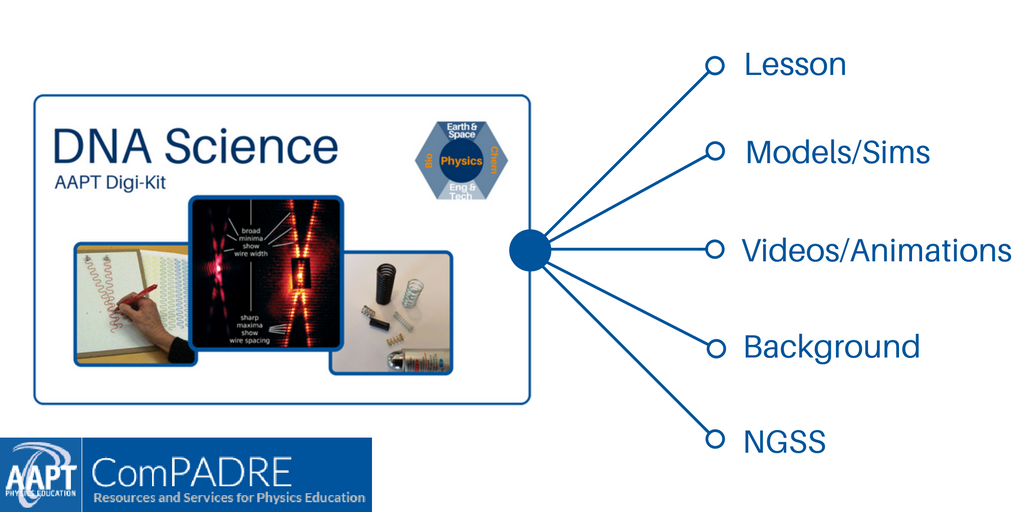
The Physics Teacher
April 2022
Volume 60 Issue 4
Sterile Neutrinos: Are They Real?
This month's cover colorfully features various MicroBooNE electronics and neutrino physicist Kirsty Duffy—check out her YouTube series created with Fermilab called “Even Bananas... (because everything creates neutrinos – the Sun, the Earth, and...even bananas!)” For more information about MicroBooNE and the mysteries of neutrinos, see “Sterile Neutrinos: Are They Real?” by Brandon Eberly and Don Lincoln. (photo credit: Reidar Hahn, Fermilab)
Columns
And the Survey Says..., Astronotes, Figuring Physics, For the New Teacher, Just Physics, iPhysicsLabs, Little Gems, Physics Challenge for Teachers and Students, Fermi Questions, Talkin' Physics, Technology In The Classroom, Tricks of the Trade, Visual Physics, and Websights.
LETTERS TO THE EDITOR
Resting a disk on a rough incline by Chiu-king Ng. DOI: 10.1119/5.0070820
Deducing the law of reflection from Fermat’s by Carl E. Mungan. DOI: 10.1119/5.0077924
PAPERS
Robust Triboelectric Charging of Identical Balloons of Different Radii by Francisco Vera, Rodrigo Rivera, Manuel Ortiz and Francisco Antonio Horta-Rangel. DOI: 10.1119/5.0038084
Sterile Neutrinos: Are They Real? by B. Eberly and D. Lincoln. DOI: 10.1119/10.0009991
Impetus-Force-Like Drawings May Be Less Common Than You Think by Amy D. Robertson, Lisa M. Goodhew, Paula R. L. Heron and Rachel E. Scherr. DOI: 5.0027858
Co-deriving the Formulas for Centripetal Acceleration and Mass-Spring Period by Mark Eichenlaub. DOI: 10.1119/5.0041135
Our Shifting Understandings of Culturally Relevant Pedagogy in Physics by Clausell Mathis and Sherry Southerland. DOI: 10.1119/5.0027583
Free Software Resources for Teaching AC RC Circuits by Minjoon Kouh. DOI: 10.1119/5.0038131
Video Analysis of an Oscillating Cantilever for Introductory Laboratories by Blane Baker, Maggie Sherer, Ben Mossinghoff and Will Laycock. DOI: 10.1119/5.0024016
Using a Smartphone Pressure Sensor as Pitot Tube Speedometer by Dominik Dorsel, Sebastian Staacks, Heidrun Heinke and Christoph Stampfer. DOI: 10.1119/5.0025899
Effectively Illustrating Nature’s Magic with Magic by F. D. Becchetti. DOI: 10.1119/10.0009992
Design of a Compact Camera Obscura by María Jesús Sánchez, Julia Gil and José Manuel Vaquero. DOI: 10.1119/5.0029800
An Arduino Investigation of the Temperature Dependence of the Speed of Sound in Air by Calin Galeriu. DOI: 10.1119/10.0009993
STEM Education of Kinematics and Dynamics Using Arduino by A. Çoban and M. Erol. DOI: 10.1119/10.0009994
A Simple Moment of Inertia Measurement by Peter F. Hinrichsen. DOI: 10.1119/10.0009995
Investigating Students’ Experience of Instructional Videos with the UX Curve Method by Guangtian Zhu, Yi Ding, Qingwei Chen and Yuhan Huang. DOI: 10.1119/10.0009996
Millikan Again by William M. Wehrbein. DOI: 10.1119/5.0026266
A Visit to Kelvinside by Thomas B. Greenslade Jr. DOI: 10.1119/5.0040276
Five Surprising Facts About Molecules of Water and Air by A. James Mallmann. DOI: 10.1119/5.0051087
Race and Physics Teaching Collection Resource
Race and Physics Teaching Continued May 2020-January 2021
DNA Science Lesson & Digi-Kit
Inspired by an article from The Physics Teacher, this multidisciplinary lesson and digital resource collection is based on How Rosalind Franklin Discovered the Helical Structure of DNA: Experiments in Diffraction (Braun, Tierney, & Schmitzer, 2011). Click the image to access this resource.


